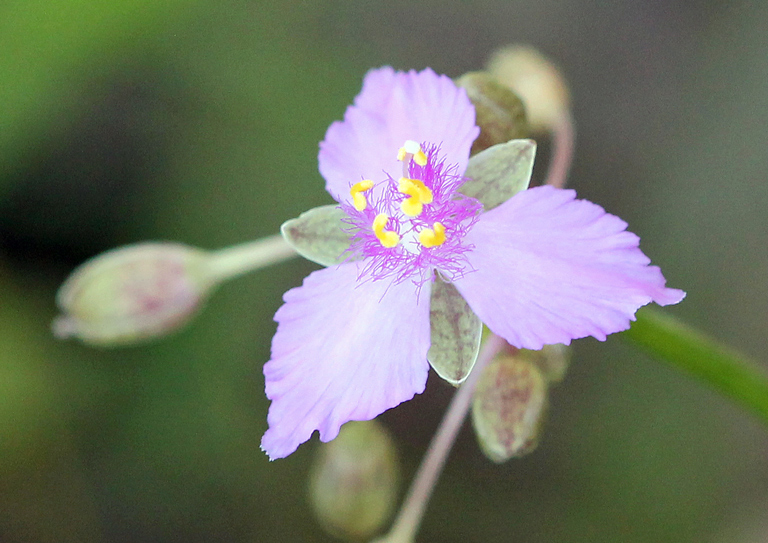Florida scrub roseling
Pictured above: Florida scrub roseling (Callisia ornata) by Mary Keim. Click on terms for botanical definitions. View post as a PDF.
Florida scrub roseling (Callisia ornata) is a beautiful and delicate perennial wildflower in the dayflower family. Its pinkish-purple blooms are three-petaled with six stamens topped by bright yellow anthers. Its leaves are long, thin and grasslike with entire margins. They are alternately arranged and form a sheath at the base of the stem.
Florida scrub roseling typically blooms spring through autumn, but was recently spotted blooming in Brevard County. It is endemic to Florida and occurs naturally in scrub and sandhill habitats.
It is a close relative of (and its blooms look very similar to) spiderwort (Tradescantia spp.) and dayflower (Commelina spp.). And like these species, the Florida scrub roseling bloom is ephemeral, meaning it opens in the morning and closes by early afternoon.
The genus name Callisia is derived from the Greek word kallos, which means “beauty.”
Family: Commelinaceae (Dayflower or spiderwort family)
Native range: Central and southern peninsular Florida (excluding Monroe and Miami-Dade counties), as well as Gulf, Franklin and Wakulla counties in the Panhandle
To see where natural populations of Florida scrub roseling have been vouchered, visit florida.plantatlas.usf.edu.
Hardiness: Zones 8B–10A
Soil: Well-drained, sandy soil
Exposure: Full sun to minimal shade
Growth habit: 6–12″+ tall
Propagation: Division, seed
Garden tips: Florida scrub roseling is somewhat difficult to establish and maintain in a landscape setting. It is also rarely propagated commercially. The best way to experience it is to see it in its natural habitat.

